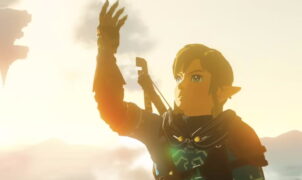For the first time in over 40 years, Nintendo has added a ‘2’ to one of its console names, breaking a long-standing tradition. But in reality, this was the only logical choice. The name of a gaming console should never be underestimated, as history has repeatedly shown.
It’s easy to dismiss the importance of a console’s name. After all, how much can a simple name influence a console’s success or failure? However, history has proven otherwise, showing how deeply a name can impact consumer decisions. SEGA, after multiple failures, nearly erased its own branding from the Dreamcast to escape the negative reputation it had developed. On the other hand, Sony played its cards wisely by capitalizing on the success of the original PlayStation. “Did you like PlayStation 1? Here’s the PS2.” Simple and effective. Even those with no gaming knowledge could instantly understand that the PlayStation 2 was superior simply because it was the next generation.
Meanwhile, Nintendo followed a different approach. From the NES to the Super NES, then the Nintendo 64 and GameCube, the company avoided a numerical naming system. Handheld consoles initially retained the Game Boy branding due to its widespread recognition, but numbering was never a priority—until now. The release of the Nintendo Switch 2 marks a dramatic shift, making it the first time in the company’s history that a mainline console carries a ‘2’ in its name. The message is clear: this is the successor to the Nintendo Switch. No ambiguity, no confusion. Just straightforward branding.
For dedicated gaming enthusiasts, the connection would be obvious regardless of the name. However, for the wider audience, this clarity is crucial—something the Wii U failed to provide.
From 100 Million Units Sold to Just 15 Million
The failure of the Wii U was historic. The Wii and Nintendo DS dominated the industry, selling in numbers never before seen. Yet, true to form, Nintendo sought to innovate once again with its next home console. The outcome? The Wii sold over 100 million units, while its successor, the Wii U, barely scraped past 15 million. What went wrong? Where did that massive audience disappear to? While it would be a stretch to blame everything solely on the name—as even the former Nintendo of America president admitted—ignoring the role it played would be naïve.
Everything about the Wii was built around its branding—the Wiimote, the Wii Balance Board, the Wii Motion Plus, the Wii Zapper. So when the Wii U launched, many consumers assumed it was just a controller with a screen for their existing Wii rather than an entirely new console. Let’s take it a step further. The console’s reveal was confusing, leaving even industry professionals scratching their heads. “After the E3 presentation, a colleague turned to me and asked, ‘So, when are you announcing the new console?'” recalled a former Nintendo marketing executive.
“You can’t take anything for granted, especially when millions of Wii owners had never played video games before,” the executive added. The entire unveiling focused on the Gamepad, never clearly showcasing the console itself. “Instead of showing the console, the reveal trailer kept emphasizing ‘the new controller,’” remembered José Arcas.
Would naming it Wii 2 have changed anything? Perhaps it wouldn’t have reached the Wii’s legendary sales, since it wasn’t the same kind of console. However, it’s almost certain that it wouldn’t have gone down as one of Nintendo’s biggest failures.
“In some ways, calling it Wii 2 wouldn’t have made sense, because the product itself introduced a very different gameplay concept aimed at a new audience,” explained José Arcas in an interview with 3DJuegos. And that makes sense. The Wii U’s core innovation was its dual-screen experience, not motion control. While better branding might have boosted sales, it also could have led to consumer disappointment when they realized it wasn’t just a Wii with upgraded graphics.
And this brings us back to the Nintendo Switch 2. This naming choice sends a powerful message. While Nintendo will surely introduce new features, the key takeaway is that this is the Switch, but better. It makes perfect sense. Companies like Valve with the Steam Deck, Asus with the ROG Ally, and Lenovo with the Legion Go have all looked to Nintendo for inspiration. So, really—what else would you call it other than the Switch 2?
Source: 3DJuegos















Leave a Reply